Growing Graham Thomas Climbing Rose
Yellow roses are my new favorite! ‘Graham Thomas’ is a beautiful representative.
Today I am playing catch-up after having been away visiting family. It’s amazing how returning to the garden after even the shortest break can yield so many surprising changes. Case-in-point: ‘Graham Thomas’ opened while we were away and it’s cheerful yellow blooms were the first thing that greeted us when we pulled into our driveway.
‘Graham Thomas’ was named for the famous rosarian who chose this rose himself as his namesake.
Hybridized and introduced by David Austin in 1983, and named for the famous rosarian, artist, musician, poet, photographer, and horticulturist Graham Thomas, this yellow beauty is one of our new roses we purchased last winter. ‘Graham Thomas’ is available as both a shrub and a climber, and the one we have growing here in our zone 6 garden is the climbing version. Like our other David Austin roses, ‘Graham Thomas’ is still quite small having only been planted as a bare-root rose in early spring.
Treated as a climber, ‘Graham Thomas’ can reach heights of 8 feet and would be a great candidate for a pillar.
‘Graham Thomas’, the climbing version, is listed as reaching heights of 6-8 feet and since it grows in an upright fashion would be a great candidate for a pillar. Ours is planted in one of our mega-containers and as it increases in height, I will be looking for something like this to support it.
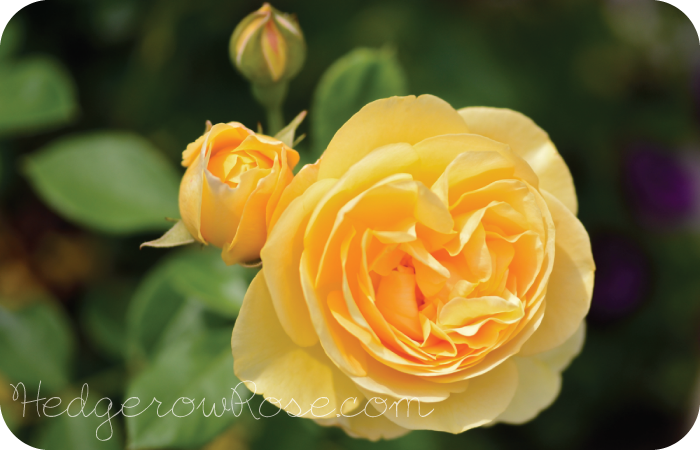 Each blossom contains approximately 35 petals in a double, cup shape, and have a fresh, tea-rose scent.
Each blossom contains approximately 35 petals in a double, cup shape, and have a fresh, tea-rose scent.
Graham Thomas’ blooms are a golden yellow and have a fresh, tea-rose scent. Each blossom contains approximately 35 petals in a double, cup shape, and are typically borne in clusters. Hardy to zones 5-10, this rose is listed as being resistant to heat and disease. However, I’ve seen black spot forming on several of the leaves on my plant, and it’s my understanding that is common trait with yellow roses due to a genetic susceptibility. Anyways, I’ve heard complaints about ‘Graham Thomas’ succumbing to fungal disease, so it’s something to watch. The leaves are a pretty bright green when new, and deepen to a medium, slightly glossy shade of green as they mature. EDIT: Graham Thomas no longer grows in our garden. Too disease-ridden!
‘Graham Thomas’ looks exceptionally lovely in a vase.
‘Graham Thomas’ was voted the World’s Favourite Rose by the World Federation of Rose Societies, and won the Henry Edland medal for fragrance in 2000. It can be purchased for spring 2012 delivery HERE.
‘Graham Thomas’ postcard sets are available for purchase in my shop SOLD OUT


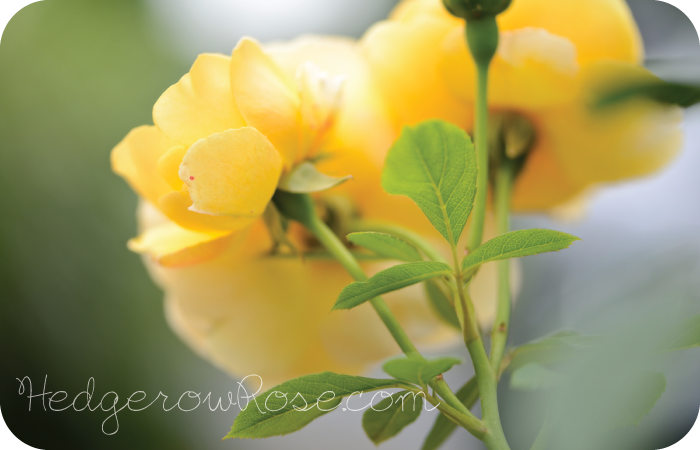
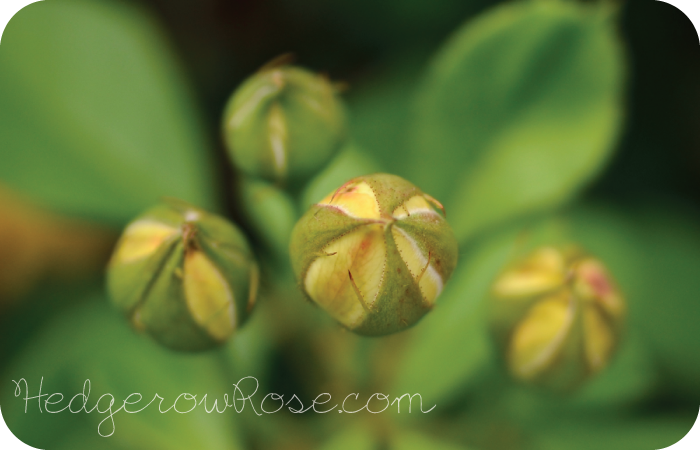


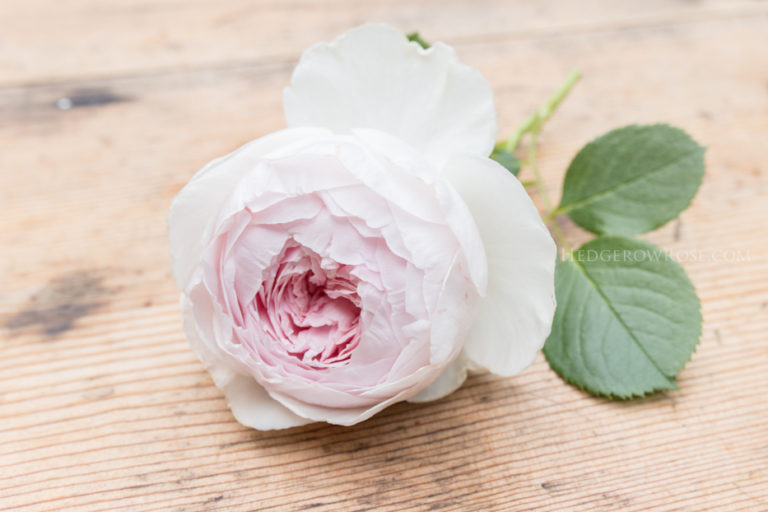

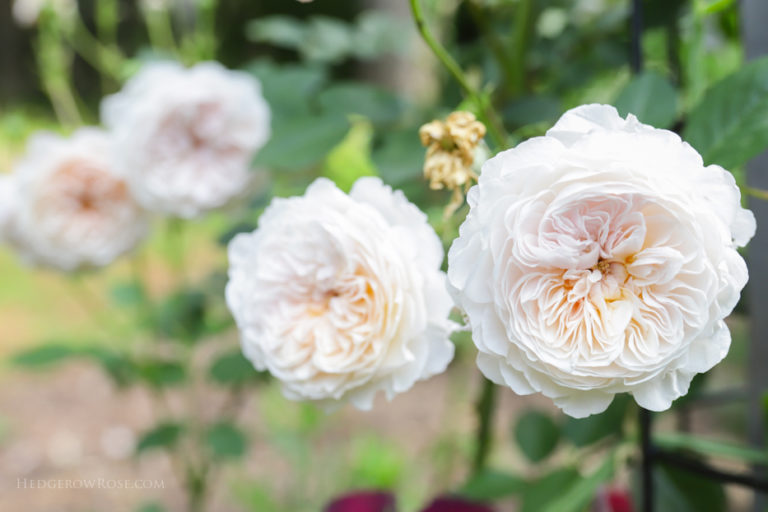
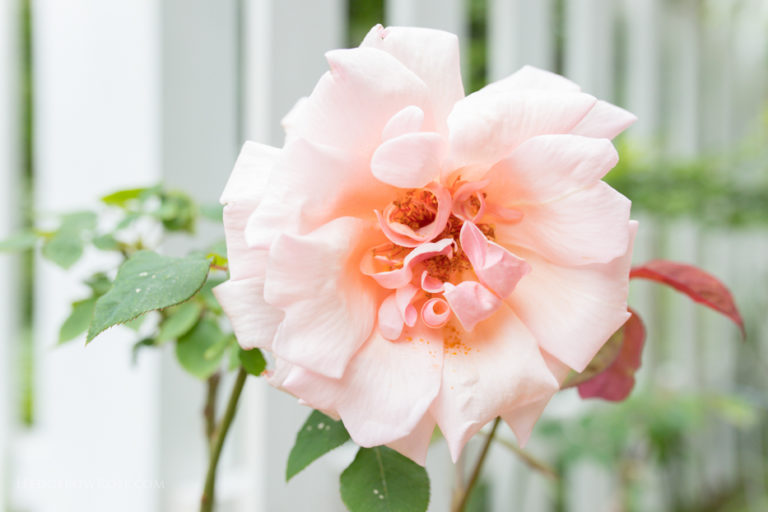
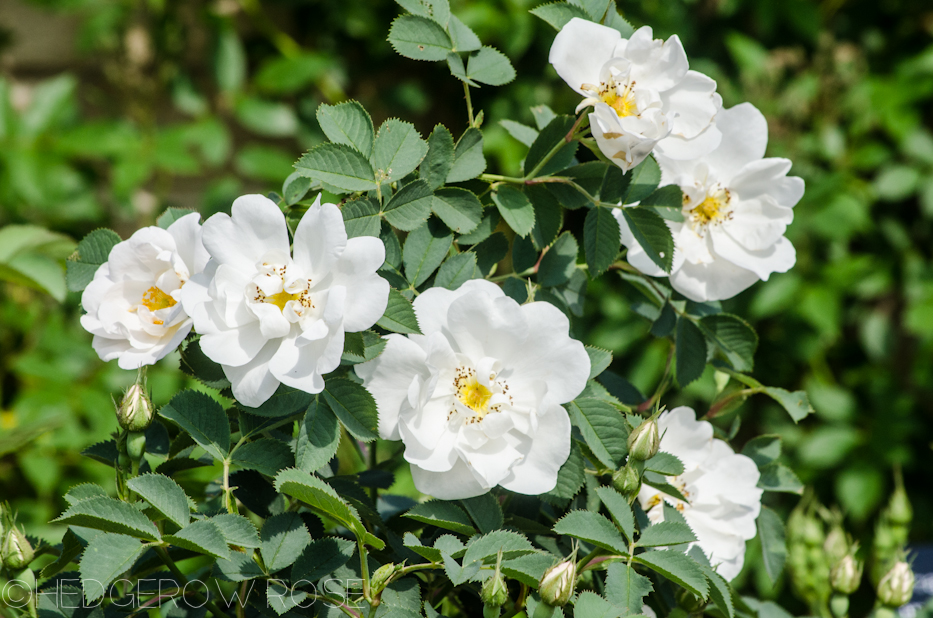

This is such a beautiful rose. Graham Stuart Thomas loved this rose named for him. It is a fitting tribute to a man who loved old sweet smelling roses.
Thanks Chris, so true! Graham Thomas certainly paved the way for the lovely “English” roses we enjoy today, and his choice of yellow from David Austin’s collections for his namesake was a nice nod to the work being done in hybridization. It’s my dream to some visit Mottisfont Abbey and see his collection of pre-1900 roses. *sigh*
I grow garlic under all my David Austin roses as they are 1) A natural fungicide against. My roses don’t get as many spots or rust. B) I love the long, light green, knife-like foliage that garlic puts out and they go well with the dark green glossy leaves of the roses.
What a great reminder! Thanks for sharing!